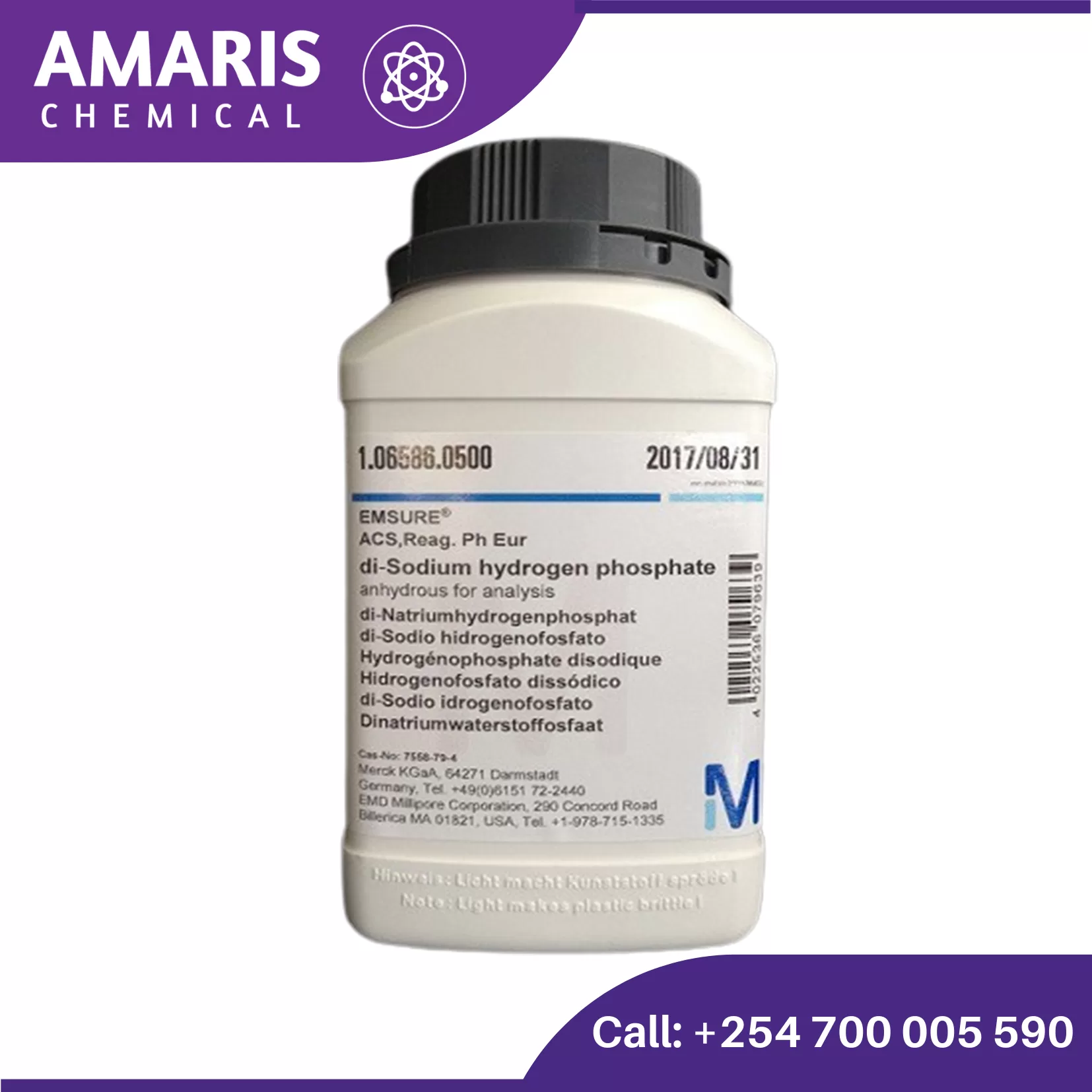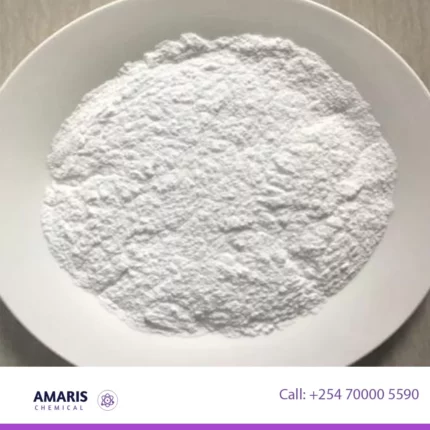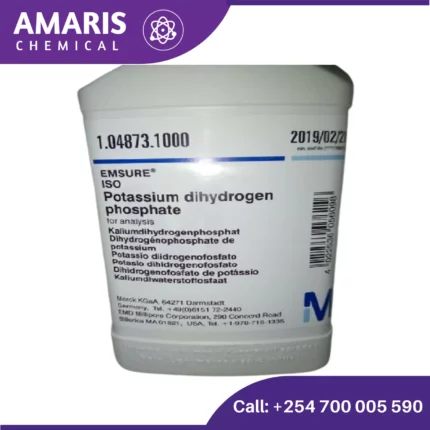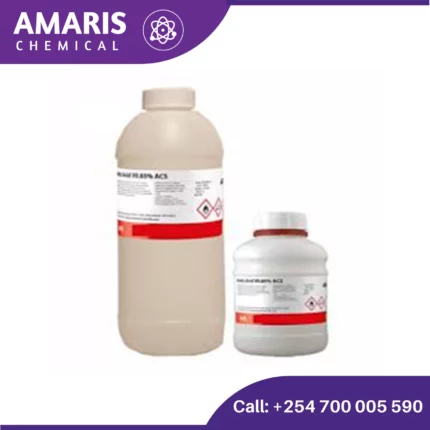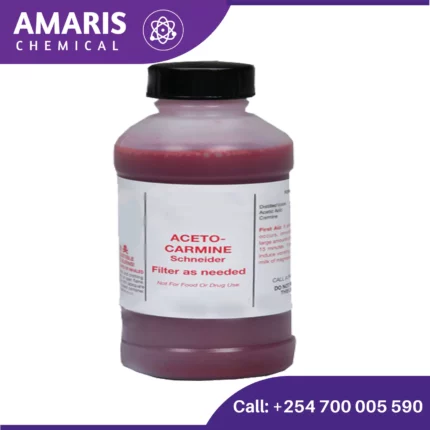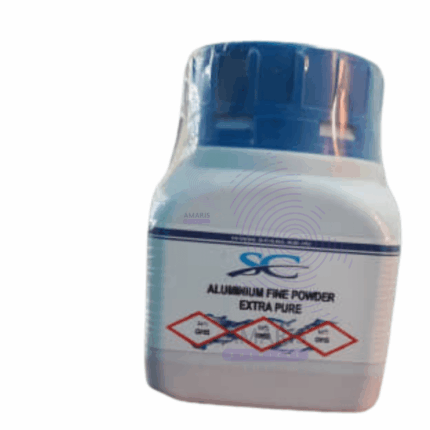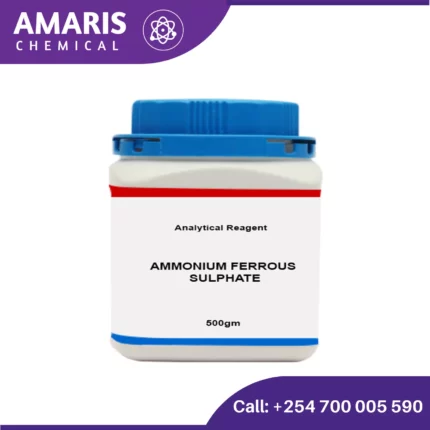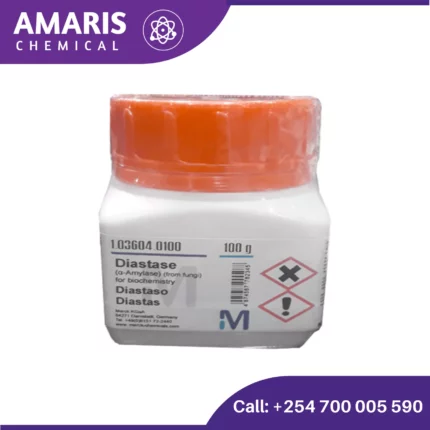

Disodium Hydrogen Phosphate 500gm
KSh700.00 Original price was: KSh700.00.KSh600.00Current price is: KSh600.00.
Disodium phosphate, also known as sodium hydrogen phosphate or disodium hydrogen phosphate, is an inorganic compound with the chemical formula Na2HPO4. It is a white, crystalline powder or granular solid that is highly soluble in water.
In terms of its chemical composition, disodium phosphate consists of two sodium (Na+) ions and one phosphate (PO43-) ion. It is derived from phosphoric acid and is commonly used as a food additive, pH buffer, and a source of phosphorus in various industries.
As a food additive, disodium phosphate is primarily used as a texturizer, emulsifier, and stabilizer in processed foods and beverages. It helps improve the texture, increase shelf life, and prevent the separation of ingredients. Additionally, it can act as a pH regulator in certain food products.
In summary, disodium phosphate is an inorganic compound that serves various purposes in food and industrial applications, primarily as a food additive and pH buffer.
Uses of Disodium Hydrogen Phosphate.
Buffer Solutions:
Disodium hydrogen phosphate is commonly used as a component in buffer solutions, especially those used in biological and biochemical experiments. Buffer solutions help maintain a constant pH level, which is crucial for many reactions and experiments.
DNA and Protein Electrophoresis:
In molecular biology and biochemistry laboratories, disodium hydrogen phosphate is used in gel electrophoresis procedures for separating DNA or proteins based on their size and charge. It helps in the preparation of running buffers for these procedures.
Cell Culture Media:
In cell culture applications, disodium hydrogen phosphate can be included in the formulation of cell culture media to maintain a stable pH environment for cell growth and proliferation.
Analytical Chemistry:
Disodium hydrogen phosphate is used as a reagent in various analytical chemistry techniques, such as spectrophotometry and chromatography, for sample preparation, calibration, and standardization.
Titration:
In titration experiments, disodium hydrogen phosphate can be used as a standard solution or as a titrant to determine the concentration of acids or bases in a given solution.
Phosphate Analysis:
It is also used in the analysis of phosphate levels in environmental samples, such as water and soil, as well as in biological samples, to assess phosphate content or to study phosphate metabolism.
Protein Purification:
Disodium hydrogen phosphate can be utilized in protein purification procedures, such as ion exchange chromatography, as a component of the buffer system for protein elution and separation.
| Weight | 500 lbs |
|---|
You may also like…
Dipotassium Hydrogen Phosphate 500gm
Manganous dihydrogen phosphate
- Chemical Industry: It can be used as a source of manganese in the production of other manganese compounds.
- Phosphating Agent: It's utilized in the phosphating process, where metal surfaces are treated with a phosphate coating to improve corrosion resistance, paint adhesion, and lubrication.
- Fertilizers: Manganese is an essential micronutrient for plants. Manganous dihydrogen phosphate can be used in fertilizer formulations to provide manganese to plants.
- Catalysis: Compounds containing manganese are sometimes used as catalysts in various chemical reactions.
Potassium Dihydrogen Phosphate 500gm
- Chemical Formula: The formula KH₂PO₄ indicates that it contains one potassium ion (K⁺), one hydrogen ion (H⁺), one phosphate ion (PO₄³⁻), and two hydrogen atoms.
- Physical Properties:
- KH₂PO₄ is a colorless or white crystalline powder.
- It is highly soluble in water, which makes it useful in aqueous solutions.
Related products
Acetaldehyde
- Chemical Structure: Acetaldehyde consists of two carbon atoms, one oxygen atom, and four hydrogen atoms. Its structure is CH3CHO, where the carbon atom in the middle is doubly bonded to an oxygen atom and singly bonded to a hydrogen atom and a methyl group (CH3).
- Occurrence: Acetaldehyde can be found naturally in various ripe fruits, coffee, and heated milk. It is also produced by the oxidation of ethanol (alcohol) by enzymes in the liver and other tissues in humans, making it an intermediate product in alcohol metabolism.
Aceto Carmine 100 ml
Properties
- Color: Red to purplish-red.
- Solubility: Soluble in water and ethanol.
- Staining Characteristics: Stains chromatin and cytoplasmic components, providing contrast for better visualization under a microscope.
Preparation
- Ingredients:
- Carmine dye: A natural red dye extracted from the cochineal insect.
- Acetic acid: A colorless liquid organic compound with a pungent smell.
- Procedure:
- Dissolve a specific amount of carmine powder in hot distilled water.
- Add glacial acetic acid to the solution.
- Filter the mixture to remove any undissolved particles.
Aluminum Fine Powder
Aluminum Potassium Sulphate 500gm
Physical Properties:
- Appearance: Colorless, transparent crystals or white powder.
- Solubility: Soluble in water but insoluble in alcohol.
- Melting Point: Decomposes at high temperatures before melting.
Chemical Properties:
- Molecular Formula: KAl(SO₄)₂·12H₂O
- Molecular Weight: 474.39 g/mol (for the dodecahydrate form)
- Acidity: It is slightly acidic in aqueous solution.

